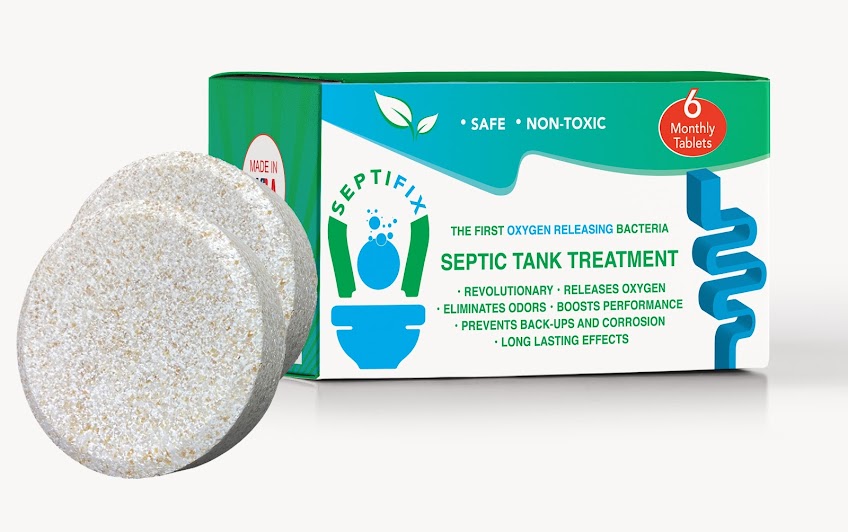If your home or business has a septic system and you’ve started experiencing issues, the first suspected culprit is an unhealthy balance of bacteria in your septic tank.
A septic tank relies on bacteria to break down waste efficiently and keep the system working properly. Often the next question asked is, can they make DIY septic tank bacteria at home. In this article, we will take a closer look at homemade septic tank bacteria.
We will cover how to make it, when you might want to use it, and give some easier and more powerful alternatives you might want to consider.
If you believe your issues go beyond a need for bacteria in your septic tank, we recommend contacting a local septic tank professional. CALL: 1.855-925-0760 For a FREE Estimate. Or visit our service request form here.
Signs of an unhealthy bacteria situation in your septic tank
If you’re like most people, you probably don’t think about your septic tank until there’s a problem. And that’s not a good thing, because ignoring your septic system can lead to big (and expensive) problems down the road. So how do you know when your septic tank needs attention?
One common sign is a clog in your drain field. If water can’t flow freely through the pipes and into the soil, it will back up in your house and cause all sorts of messy problems. Slow-draining sinks and toilets are other clues that something is wrong with your septic system.
Another sign that it’s time for maintenance is when you start seeing sewage bubbling up out of the drains in your yard. This usually means that the tank has reached capacity and needs to be pumped out.
CALL: 1.855-925-0760 For a FREE Estimate. Or visit our service request form here.
Sometimes, you can take care of organic sludge build-up by adding septic treatment additives to your septic system. If you believe your septic tank has a bad build-up of material we recommend a powerful septic tank treatment like Septifix, before the problem causes serious problems that are way more costly to fix. If you want to read our full breakdown of Septifix, check out our review here.
What Are Septic Tank Treatment Products?
If you are new to septic systems, then you might be wondering what are septic tank treatments? Septic tank treatment products are designed to help keep septic tanks functioning properly by removing built-up sludge and preventing the tank from becoming clogged. Septic tank treatment products can help to improve the overall efficiency of the tank and can help to prevent backups and system failures.
Septic tank treatments are additives that seek to improve bacterial presence and action on waste. These products can also be described as septic solutions. Septic tank treatments may include home remedies like enzymes and bacteria in order to break down solids flowing into the septic tanks for proper decomposition of waste.
Septic tank treatment products include septic aerators. The article discusses homemade septic tank treatments that you should consider.
There has been a significant shift towards natural solutions for treating septic tanks in recent years, but there is still significant use of chemical-based or synthetic options. Another reason we recommend Septifix is because it’s all-natural and very powerful, but you can find our list of 7 recommended septic tank treatments here.
Are Septic Tank Additives Necessary?
Septic tank additives are not necessary for most septic tanks. In general, septic tanks operate just fine without any additives. However, if your tank is having problems or you live in an area with a lot of sand, then you may need to add bacteria to your tank.
There are two types of septic tank additives: biological and chemical. Biological additives contain live bacteria that help break down the waste in your tank. Chemical additives, on the other hand, kill bacteria and can thus damage your septic system.
SEPTIFIX contains no harsh chemicals, requires no special handling and is non-toxic and 100% safe to use, and is manufactured in our premium facility here in the US, so rest assured that you’ll get a premium quality product!
The Environmental Protection Agency (EPA) and the Ohio Department of Health both advise against using chemical septic tank additives due to their potential harm to the environment and human health. Instead, they recommend using a biological additive that will not interfere with the natural ecosystem around your home.
There is no real benefit to adding bacteria to a new septic system – it’s only necessary if the existing biota is stressed. Bacteria may be added to an existing septic tank when it is being supplemented with enzymes or is new, depending on what people believe they need. However, this should only be done after consulting with a professional to make sure it is done correctly
Here Are A Few Homemade Septic Treatment Recipes
If you want to avoid using store-bought products. Here are some DIY homemade suggestions.
Septic Tank Care recommends mixing:
- 3 cups of warm water
- 2 cups of sugar
- 2 cups of cornmeal
- 2 packets of yeast
Mix the ingredients in a large bucket and then, when the mixture starts to bubble, pouring it into your toilet and flush twice. It only needs to enter one toilet, as it treats the entire tank rather than your toilet’s drainage system. It is suggested you flush the toilet a few more times about 5 minutes apart to ensure all the mixture is removed from the pipes.
As the Old Farmers’ Almanac explains, using yeast is a great way of maintaining a healthy bacterial level in your septic tank. It recommends adding 1/2 cup of active yeast to your tank by flushing it down the toilet, then adding another 1/4 cup every four months.
After flushing, avoid taking long showers, doing laundry, or over-flushing your toilets for the next eight hours. You don’t want to put too much water into your septic tank as this can dilute your treatment and make it less potent and effective…
That is why we would still recommend above all, using a more powerful product like SEPTIFIX that has been scientifically designed so that each of the 55 grams tablets contains 14 strains of aerobic bacteria – over 10 billion bacteria strains per gram, oxygenation, and pH regulating compounds that safely and effectively boost the growth of bacteria colonies inside your septic tank, allowing them to thrive for up to 90 days.
Conclusion
Here is a quick recap of the article.
Many septic systems do not need added bacteria, but when problems start to arrive they can often be attributed to an unhealthy amount of bacteria in the system.
Adding bacteria to the system can help break down sludge and organic buildup that can clog the system and create long-term expensive issues.
Overall we recommend SEPTIFIX as one of the most powerful, natural septic tank additives available. With each flushable tablet contains 14 types of strains of aerobic bacteria and over 10 billion bacteria strains per tablet, allowing them to thrive for up to 90 days.
We shared to DIY bacteria recipes above from Septictankcare.com and the Old Farmers Almanac.
Remember it’s important to maintain your septic tank, so check out our list of 101 septic safe household products here.











